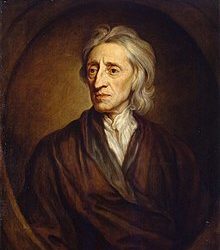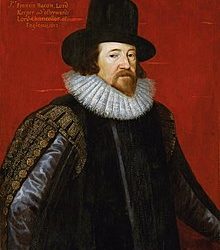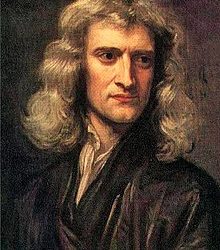Oxford, UK: Oxford University Press, 2011.
252 pp. $36.95 (hardcover).
John Locke began the first draft of his now famous Essay Concerning Human Understanding in 1671, some eighteen years before publishing the first edition in 1689. Throughout that time, he witnessed a flurry of scientific development, most importantly the publication of Isaac Newton’s Philosophiæ Naturalis Principia Mathematica in 1687. Like virtually all members of the Royal Society, Locke supported experimental natural philosophy (what we today call “science”), which proceeded on the basis of observation and experiment. He saw immediately the ways in which Newton’s reasoning bolstered his own case against particular theories of speculative natural philosophy.
Speculative natural philosophers, by contrast to experimental natural philosophers, began with abstract principles and eschewed or downplayed the significance of observation and experiment. Descartes, for instance, had spun from thin air his famous vortex theory, which held that celestial bodies move in a massive network of whirling fluid. Similarly, in order to explain how the biblical flood could have happened given the earth’s insufficient volume of water, Thomas Burnet posited that the earth once had a shell like that of an egg. Supposedly, it cracked and submerged into the water below, then gradually resurfaced.
Many supporters of experimental natural philosophy, including Locke, were either skeptical or extremely cautious of broad generalizations, perhaps as an overreaction to the “unintelligibility” of those posited by speculative philosophers. Little wonder then that it took Locke several years to fully appreciate Newton’s positive achievement: The Principia demonstrated that experimental philosophers can achieve an understanding of the world in terms of broad, observation-based principles. In the 1690s, as Locke gradually realized the efficacy of Newton’s principles, he modified his views on scientific methodology and knowledge theory—or so Peter Anstey contends in his brilliantly argued John Locke and Natural Philosophy.
Anstey is a professor of philosophy at the University of Sydney, author of The Philosophy of Robert Boyle , and editor of several collections, including The Philosophy of John Locke: New Perspectives and The Idea of Principles in Early Modern Thought. In John Locke and Natural Philosophy, he leverages his encyclopedic knowledge of Locke’s life, his published and unpublished writings, and those of his predecessors and contemporaries to provide a fresh analysis of Locke’s views on scientific method. This is necessary, according to Anstey, because those who have studied Locke’s natural philosophy often have done a poor job of interpreting it.
One set of claims Anstey takes to task are those that construe Locke’s Essay as aiming primarily to defend mechanistic or corpuscularian metaphysics, the first being views that explain matter by analogy to the functioning of machines and the second being those that do so by appeal to imperceptible corpuscles similar to what we now call atoms.1 Anstey carefully weighs the evidence for these views and concedes that the Essay is “a rambling work” that mixes agendas. However, he concludes—after careful analysis of various drafts and of Locke’s stated purposes—that the Essay was “primarily aimed at epistemic hygiene, at having a sober estimate of our understanding in order to avoid wasteful, futile disputes over subjects about which we cannot have knowledge” (21).
It’s true that, in Locke’s view, such hygiene requires embracing the experimental method over the speculative, and he sometimes made use of what he considered the best available scientific theories when explaining his ideas. But, Anstey holds, the Essay is not expressly committed to any particular theory of matter.
In fact, Anstey goes on to trace Locke’s thinking on the nature of matter from his earliest medical writings to the final edition of the Essay, and he reveals a view at odds with the above misinterpretation of the Essay’s aim. Locke did think that the essential nature of material bodies derives from their inner constitutions—made up of submicroscopic parts or corpuscles. But he was pessimistic about the prospects of ever being able to perceive this inner constitution and held that we can’t know the essential nature of entities until we do. So, Anstey shows, despite Locke’s inclinations, he regarded theories of matter as speculative and thus subject to some of the criticisms he was leveling in the Essay.
Locke held that theories and hypotheses can be aids to memorizing potentially useful ideas. For instance, familiarity with competing hypotheses may enable a physician to recognize certain patterns of symptoms and thus determine which hypothesis, if any, is supported by the evidence. However, thought Locke, such pattern recognition is still quite remote from reliable causal knowledge. And, in Locke’s experience, those who became enamored of such hypotheses were prone to intellectual laziness instead of ongoing, detailed observation.
In order to be scientific, Locke held, broad generalizations ultimately would need to be demonstrated in a stepwise fashion from observation, preferably in mathematical terms. Anstey provides an interesting account of what Locke called “demonstrative knowledge,” of which mathematics is an example. According to Locke, we acquire demonstrative knowledge when we perceive the relation between two ideas through an intermediate idea, such as when we add two angles of a triangle to a third and learn that their sum is 180 degrees.
In contrast to many of his contemporaries, Locke held that mathematical reasoning ultimately derived not from principles and maxims but from perception: We perceive number or quantity directly, in the form of discrete units of things. And we can reason mathematically about perceptible qualities such as extension or degrees of angles by reference to a standard of measure. Thus, Anstey explains that in Locke’s view, “Mathematical demonstration is fundamentally an act of perception of the relations among ideas, and not the derivation of new propositional knowledge on the basis of true premises” (139).
So, whereas later philosophers adopted what came to be known as the analytic/synthetic dichotomy and classified math as certain but uninstructive, Locke held that mathematical reasoning transcends these categories: It is both certain and instructive. As a result, long before reading Newton’s Principia, Locke regarded mathematics as the paradigm of demonstrative reasoning: In his view, mathematics is“the best ground of science . . . [that the natural philosopher] can have or expect” (112).
Yet, perceiving and quantitatively analyzing the inner constitutions of entities in order to develop a “corpuscular metric”—a true science of the nature of material entities—was, in Locke’s view, beyond the foreseeable future. Microscopes simply did not enable people to see corpuscles; and without this ability, scientists could not achieve demonstrative knowledge of material things based on observation. Anstey stresses that as a result, Locke held that the only potentially fruitful method left to scientists was that of constructing “natural histories,” a method prescribed by Francis Bacon.
In Anstey’s view, many commentators have underappreciated or misconstrued the influence of Francis Bacon on John Locke, and he seeks to correct this. As a means of making progress in the sciences, Bacon prescribed collecting large databases of organized observations, which he termed “natural histories.” Locke’s greatest contemporary influence, Robert Boyle, was “the leading exponent” and chief practitioner of Bacon’s natural history method, and Locke assisted Boyle in constructing natural histories. Boyle’s Memoirs for the Natural History of Humane Blood was dedicated to Locke and may have been written at his request.2 Locke also referred to Bacon as the “Patriark of experimentall [sic] philosophy” and owned more books by him than any other writer on natural philosophy except Boyle (52). In short, Anstey shows that Bacon’s method of constructing natural histories was fundamental to Locke’s conception of natural philosophy.
Locke did diverge from Bacon in regard to the role of abstract principles and hypotheses in scientific thought. In Bacon’s view, the purpose of constructing natural histories was to accumulate observations from which scientists could form inductive generalizations. But, for the reasons discussed above, Locke held that accurate generalizations were a long way off. Indeed, for many subjects, he thought we might never have enough information to make accurate generalizations.
However, shortly after the Principia was published, Locke reviewed it for a journal and soon befriended Newton. Newton had shown how principles could be used to reason demonstratively about celestial physics. Anstey argues that as this slowly dawned on Locke during the 1690s, he began to change his views on the efficacy of broad principles. Anstey writes:
The first inkling that Locke was altering his views with regard to the role of principles in natural philosophy came in 1693, in a new section written for Some Thoughts concerning Education. . . . Locke tells us that “the incomparable Mr. Newton, has shewn, how far Mathematicks, applied to some Parts of Nature, may, upon Principles that Matter of Fact justifie, carry us in the knowledge of some. . .particular Provinces of the Incomprehensible Universe.”(149)
In other words, Locke granted that Newton had established observation-based mathematical principles that give us knowledge, though only in one sphere of science. Anstey discusses similarly fascinating comments by Locke from, among other places, his Of the Conduct of the Understanding and Elements of Natural Philosophy, both composed in the late 1690s and published after his death. According to Anstey, these reveal “that by the late 1690s Locke had come to the view that principles are, after all, legitimate bases for reasoning in natural philosophy, as long as they are principles that matter of fact justify and not speculative hypotheses” (151).
How did this development impact the subsequent edits that Locke made to his most enduring and influential work, his Essay? Anstey manages to maintain an element of suspense on this question throughout much of the book, and it would be a disservice to spoil that here. Readers of the book will also find illuminating accounts of Locke’s interests in chemistry and his theory of species, which is, in fact, a theory of concept formation. Anyone interested in Locke, early modern history, philosophy, science, or the intersections of these fields will find much to enjoy in John Locke and Natural Philosophy.
Click To Tweet
You might also like
Endnotes
1. Anstey holds that there is an important distinction between mechanistic or corpuscularian theories, “though they are often used interchangeably.” He writes: “By ‘mechanism,’ then, we mean a theory of explanation of material phenomena that proceeds by analogy to an explanation of the functioning of machines. . . . By contrast, the phrase ‘corpuscularian philosophy,’ coined by Boyle, connotes an explanation of the qualities of bodies by appeal to invisible corpuscles, which are postulated as the constituents of all material bodies and whose properties and structural arrangements are thought to give rise to the sorts of powers and qualities that these bodies possess.” Anstey holds that these two “are not co-extensive, and a degree of precision here will help to untangle a number of issues that otherwise are susceptible of conflation” (18).
2. Robert Boyle, Memoirs for the Natural History of Humane Blood, University of Michigan: Early English Books Online, https://quod.lib.umich.edu/e/eebo/A28998.0001.001/1:3?rgn=div1;view=fulltext (accessed April 24, 2019).


![[TEST] The Objective Standard](https://test.theobjectivestandard.com/wp-content/uploads/2017/10/logo.png)


















